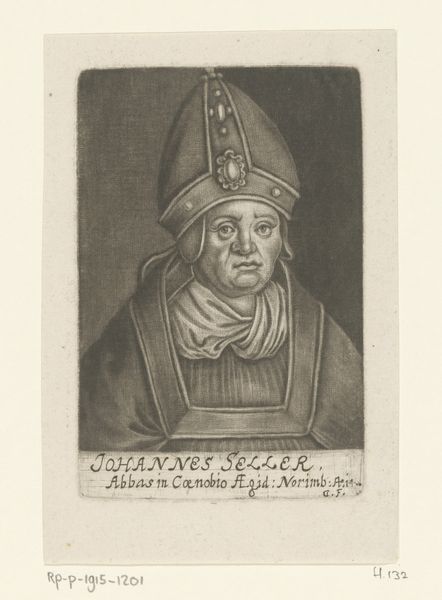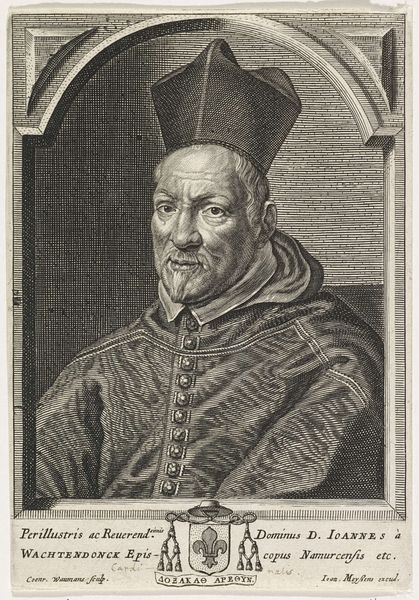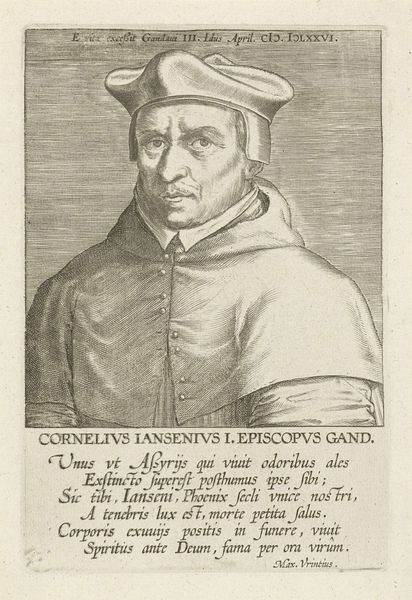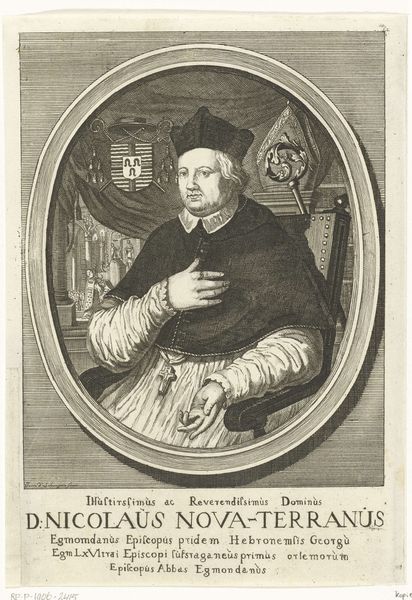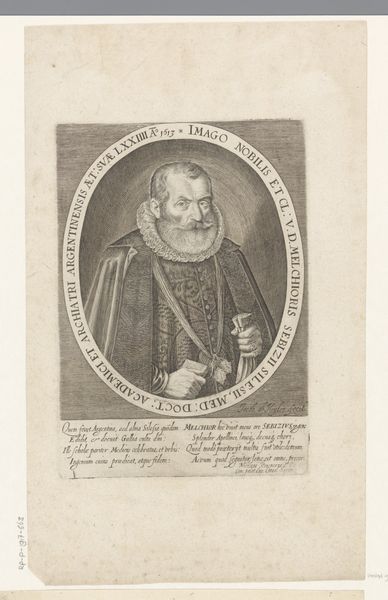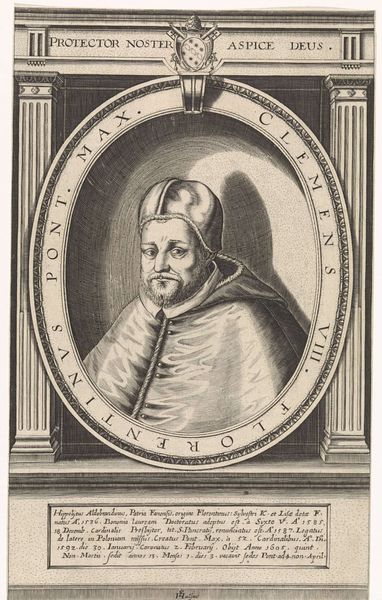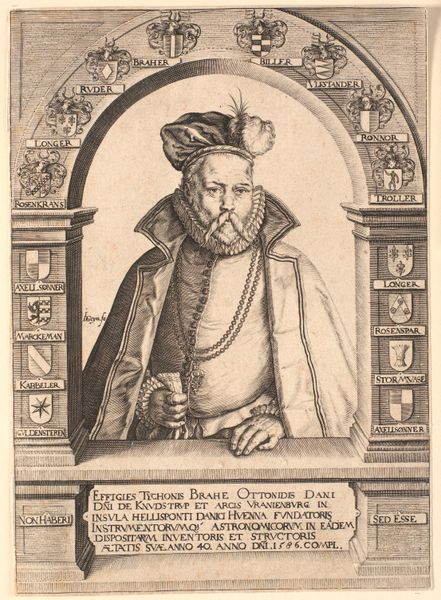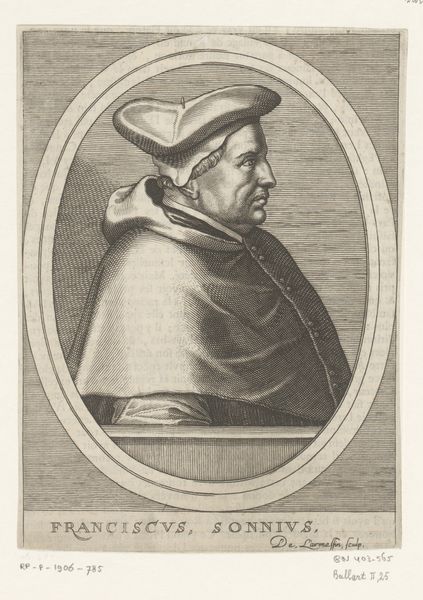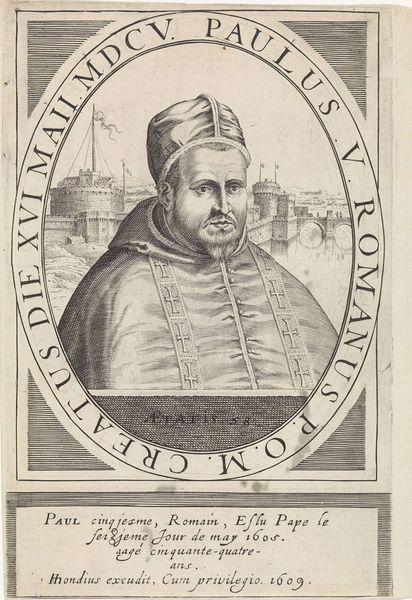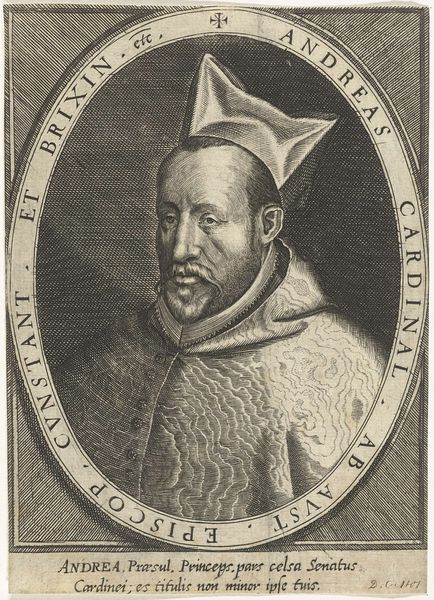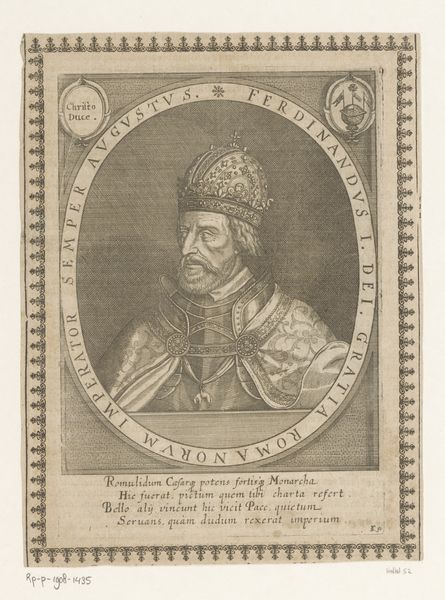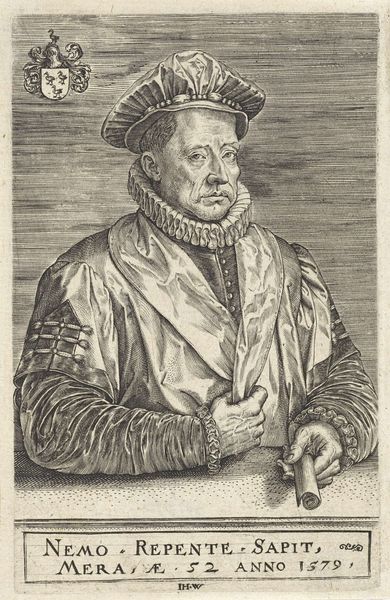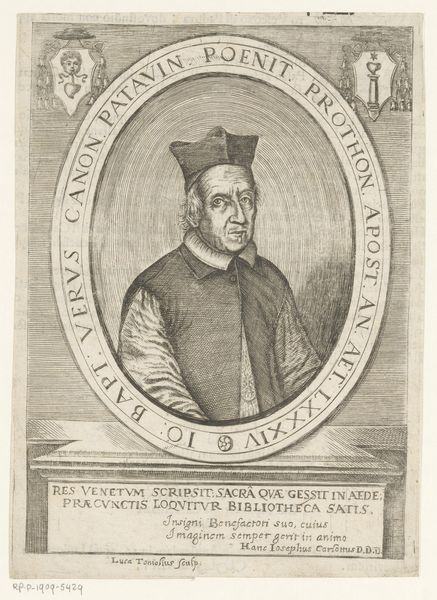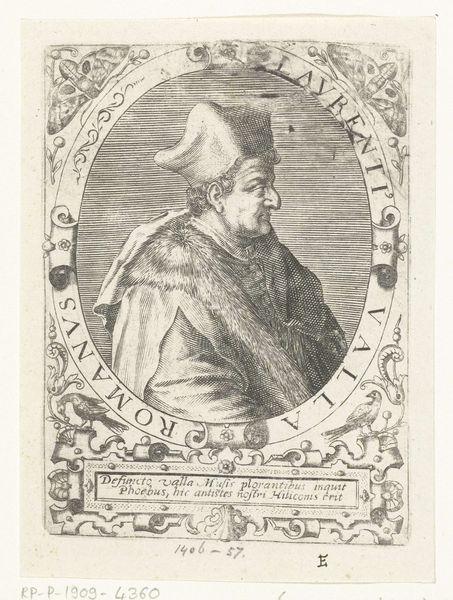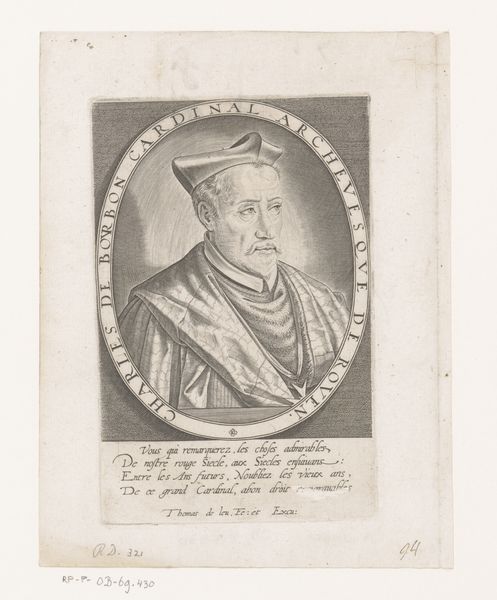
print, engraving
#
portrait
#
baroque
# print
#
old engraving style
#
pencil drawing
#
portrait drawing
#
engraving
Dimensions: height 115 mm, width 90 mm
Copyright: Rijks Museum: Open Domain
Editor: We're looking at "Monnik als koning van het Oude Jaar," or "Monk as King of the Old Year," an engraving by Jacob Gole, likely made sometime between 1670 and 1724. The portrait depicts an aging monk in elaborate headgear. There's a certain weariness in his expression that really captures my attention. How do you interpret this work? Curator: That weariness, as you call it, is crucial. Let's consider this image within its historical context. It appears to be a satirical or allegorical print, perhaps commenting on power, mortality, and societal hierarchies. The monk, adorned with what seems like a makeshift crown, signifies a kind of mock royalty. What might this juxtaposition of religious humility and royal power signify to you? Editor: It’s like a commentary on the fleeting nature of power, maybe? That even those in positions of authority, whether religious or royal, are ultimately subject to the same fate? Curator: Precisely. And we can delve deeper by examining the text accompanying the image. Phrases like "King Jacques of the past year" suggest a cyclical understanding of power—a king or authority figure who is ultimately replaced, becoming a figure of the past. Could this also be a subtle critique of social structures and their inherent instability? Perhaps even pointing to an equality in death that belies class structures in life? Editor: That's fascinating. I hadn’t considered the cyclical element so explicitly. I was too focused on the monk's somber face. Curator: Visual cues are intentionally deceiving and subjective! Engaging with the history behind these visuals is necessary for meaningful analysis. Remember that art often acts as a mirror reflecting the sociopolitical anxieties and aspirations of its time. This work presents itself as religious art, perhaps a portrait, but that reading hides satire regarding worldly political matters. Editor: So, looking beyond the immediate image helps unlock layers of meaning. Thanks, that's given me a whole new perspective. Curator: My pleasure, and keep pushing against what meets the eye; never stop digging below the surface.
Comments
No comments
Be the first to comment and join the conversation on the ultimate creative platform.
